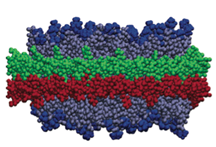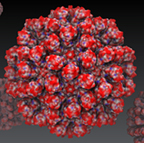Editorials
A 2015 TCBG Symposium brought together scientists from across the Midwest to brainstorm about what's on the horizon for computational modeling. See a summary of what these experts foresee.
Read more
Now that the U.S. has a clear directive to build an exascale computer, Klaus Schulten weighs in on what this could mean for the field of computational biophysics.
Read more
The Urbana NIH Center previews what it will propose for the 2017-2022 funding cycle. By Lisa Pollack.
Read more
Since 1988 Illinois researchers have consistently honed their skills in parallel computing, which enabled them to elucidate dynamic processes occurring in many membrane proteins and produce exciting discoveries. By Lisa Pollack
Read more
Starting with a discovery at Harvard in 1971 of a hidden state, Klaus Schulten spent a large portion of his career demystifying the polyenes, versatile molecules central to vision and photosynthesis. By Lisa Pollack.
Read more
Since 2001 Illinois scientists have innovatively used molecular dynamics to simulate biological molecules combined with nanodevices. It turns out that the computational microscope is the quintessential imaging tool for these bionano systems. By Lisa Pollack.
Read more
MDFF is a computational method that yields structures of massive biomolecular assemblies at atomic detail, using hybrid experimental data. Now Illinois scientists are applying MDFF to fascinating systems like the ribosome and HIV. By Lisa Pollack.
Read more
The software program VMD is a visualization and analysis tool that goes where no microscope can. Trace the trajectory of its development over the last two decades. By Lisa Pollack.
Read more
Go behind the scenes to examine the myriad roles Illinois researchers have played to explain photosynthesis: quantum physicist, structural biologist, forensic scientist, and computational biophysicist.
By Lisa Pollack.
Read more
In the 1980s Klaus Schulten let two students build him a supercomputer. This
risky project, and a 1990s student revolt, led to NAMD. Now with 50,000 users
worldwide, this article charts the colorful history of NAMD. By Lisa Pollack.
Read more
How do birds sense magnetic fields? Theoretical and computational biology may
provide tools to unearth the answer. Researchers are combining behavioral
studies with physics and chemistry to unlock the enigma of this sixth sense.
By Lisa Pollack
Read more














